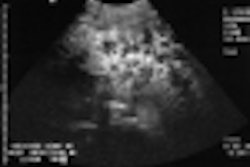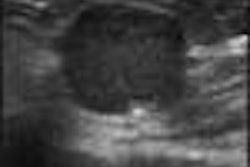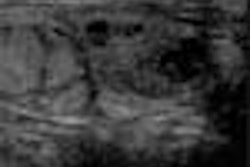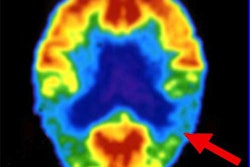(Ultrasound Review) The North American Symptomatic Carotid Endarterectomy Trial (NASCET) of 1998 determined that symptomatic patients with >50% stenosis of the internal carotid artery benefited from surgical treatment.
"This has necessitated the development of screening parameters for diagnosis of 50% or greater carotid stenosis on the basis of the reference standards used in the study by the NASCET," according to researchers from the Hospital of the University of Pennsylvania. They undertook that task and recently published their research in the Journal of Ultrasound in Medicine.
The authors determined revised Doppler criteria for the diagnosis of >50% carotid stenosis based on the reference standards used in the NASCET. The advantages of ultrasound examination over angiography are well understood. Ultrasound is safe, reliable, and inexpensive, and does not carry a risk of stroke. Increasingly, ultrasound is being used as the sole method of assessing luminal narrowing and plaque integrity preceding carotid surgery.
The researchers compared the carotid duplex and cerebral angiography of 110 patients who were evaluated for carotid artery disease within their department over a two-year period. Peak systolic velocity (PSV) and end diastolic velocity (EDV) measurements were determined in the common carotid artery (CCA) just proximal to the bifurcation, the proximal, mid and distal internal carotid artery (ICA), and the external carotid artery. Velocities were also obtained from any level that was thought to be atheromatous and therefore narrowed.
Of the 220 arteries examined, a >50% stenosis was present in 47%. The highest Doppler accuracy was achieved using a PSV of >170cm/sec. This velocity cut-off resulted in a sensitivity of 92% and specificity of 90%. Lower velocities enabled better sensitivity but led to a drop in specificity. Both the positive and negative predictive values were around 90% using this velocity cut-off.
Using an EDV of 60cm/sec resulted in an accuracy of 91%, a sensitivity of 93%, and a specificity of 86%. The ICA PSV was divided by the CCA PSV to obtain a ratio, and a ratio >2 resulted in a sensitivity of 93%, a specificity of 75%, and an accuracy of 85%. The ICA EDV was divided by the CCA EDV and a ratio >2.4 resulted in a sensitivity of 96%, a specificity of 79%, and an accuracy of 89.5%. Using a combination of these four criteria resulted in a sensitivity of 95%, a specificity of 100%, and an accuracy of 97% for >50% stenosis.
Velocity ratios were useful in circumstances where there may be velocity variability due to blood pressure problems, low cardiac output, and contralateral and ipsilateral tandem lesions. According to the authors, "Our criteria are appropriate for screening; however, it is important to note that such criteria need to be individualized to the clinical situation."
"Duplex criteria for determination of 50% or greater carotid stenosis"
David G. Neschis et al
Jeffrey P. Carpenter, Hospital of the University of Pennsylvania, 4 Silverstein, 3400 Spruce St., Philadelphia, PA 19104, USA
Journal of Ultrasound in Medicine, 2000 (March); 20:207–215
By Ultrasound Review
May 23, 2001
Click here to post your comments about this story. Please include the headline of the article in your message.
Copyright © 2001 AuntMinnie.com



















